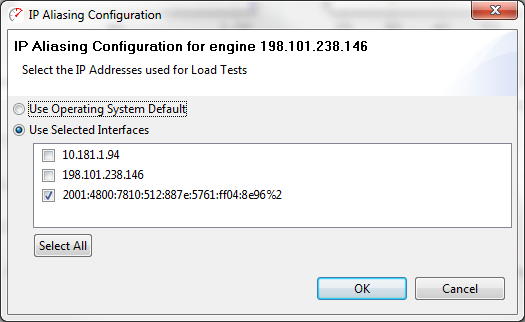Load testing a website with IPv6 traffic
Are your apps ready for IPv6 users? Many organizations have started to support access to their applications via IPv6 addresses, and along with that comes the need to include IPv6 traffic in the load test plan. Indeed, we recently tested our customer portal to be sure it was accessible via IPv6 (it is – the application is deployed on Google’s AppEngine infrastructure, which includes IPv6 accessibility baked-in).
Of course, before you get to load testing, you should start with a basic connectivity check to ensure your website is accessible from IPv6 routes – you can use a tool such as ipv6-test.com, which checks both the DNS and website IPv6 configuration. If you need to check the connectivity from your workstation you can start by pinging ipv6.google.com. For more details, you can visit test-ipv6.com – this will perform several checks to determine if you can access IPv6 websites from your browser.
Load Tester has supported IPv6 testing for several releases and it was improved in the recent 5.1 release. What does it take to test with IPv6 using Load Tester? First, you need a load engine with IPv6 connectivity — this can be any machine with IPv6 connectivity that has the Load Tester Load Engine installed on it. If you cannot get access to such a machine, you can rent as many as you need by the hour from the RackSpace Cloud (this post shows you how to install and configure the load engine). Next, after you have connected to the load engine in the Engines View within Load Tester, select an engine with IPv6 connectivity and press the Configure IPs button. You will see something like this:

This dialog selects which IP addresses the load engine will assign to virtual users. When more than one is selected, they will be assigned to virtual users in round-robin fashion.
Simply enable the IPv6 address and, if desired, disable the others. In this example, I’ve enabled only the IPv6 address – which means all virtual users (VUs) running on this engine will use that address. After each engine has been configured, you are done – that is all there is to it!
If you have any questions, please comment here or use our support system.
Chris Merrill, Chief Engineer
When his dad brought home a Commodore PET computer, Chris was drawn into computers. 7 years later, after finishing his degree in Computer and Electrical Engineering at Purdue University, he found himself writing software for industrial control systems. His first foray into testing software resulted in an innovative control system for testing lubricants in automotive engines. The Internet grabbed his attention and he became one of the first Sun Certified Java Developers. His focus then locked on performance testing of websites. As Chief Engineer for Web Performance since 2001, Chris now spends his time turning real-world testing challenges into new features for the Load Tester product.